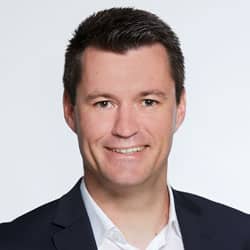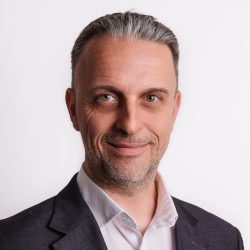We supply an essential commodity
No toothpaste
without fluorspar
Fluorspar shapes our everyday lives. Hydrogen fluoride extracted from fluorspar is the starting point for countless everyday products such as toothpaste, computers, mobile phones, Goretex jackets, Teflon pans, pesticides, brake pads, optical glasses, and many more. The mineral also plays a significant role as a flux in the production of metals such as aluminium – hence the German name „Flussspat“.
Hydrogen fluoride extracted from fluorspar is the starting point for countless everyday products such as toothpaste, computers, mobile phones, Goretex jackets, Teflon pans, pesticides, brake pads, optical glasses, and many more. The mineral also plays a significant role as a flux in the production of metals such as aluminium – hence the German name „Flussspat“.
No energy transition
without fluorspar
Fluorspar is the raw material basis for industrial innovations: fluorspar is necessary for the production and operation of high-performance lithium-ion batteries and rechargeable batteries, without which e-mobility would not be possible. Every electric car contains at least 10kg of fluorspar. Fluorspar is indispensable for the production of solar cells. Thus, the demand for this mineral raw material will continue to increase as a result of the coming energy and transport transition.
Fluorspar is necessary for the production and operation of high-performance lithium-ion batteries and rechargeable batteries, without which e-mobility would not be possible. Every electric car contains at least 10kg of fluorspar. Fluorspar is indispensable for the production of solar cells. Thus, the demand for this mineral raw material will continue to increase as a result of the coming energy and transport transition.
Fluorspar – critical for Germany and Europe
The European Union and the German government classify the supply of fluorspar as “critical”. That is why both are fostering domestic sourcing in their raw material strategies. In 2019, around 68% of German domestic demand had to be imported from overseas (e.g. South Africa, China, Mexico). With the Käfersteige mine, we can significantly reduce this dependence on imports, without supply chain risk and according to the highest environmental and safety standards: We want to supply up to 40% of the German demand for fluorspar.
The European Union and the German government classify the supply of fluorspar as “critical”.
That is why both are fostering domestic extraction in their raw material strategies. In 2016, around 75% of German domestic demand had to be imported from overseas (e.g. South Africa, China, Mexico). With the Käfersteige mine, we can significantly reduce the dependence on imports, without supply chain risk and according to the highest environmental and safety standards: We want to supply up to 40% of the German demand for fluorspar.
Fluorspar –
hub Pforzheim
Fluorspar for 10 million e-car batteries per year. Deutsche Flussspat GmbH wants to put the abandoned Käfersteige mine back into operation. This means that we can supply enough fluorspar for 10 million electric cars per year – thus ensuring the future of Baden-Württemberg as an automotive location.
Jobs for highly qualified specialists in a high-tech mine will be created with the involvement of regional companies, training institutions and research institutes.
Fluorspar for 10 million e-car batteries per year
Deutsche Flussspat GmbH wants to put the abandoned Käfersteige mine back into operation. This means that we can supply enough fluorspar for 10 million electric cars per year – thus ensuring the future of Baden-Württemberg as an automotive location.
Jobs for highly qualified specialists in a high-tech mine will be created with the involvement of regional companies, training institutions and research institutes
The Käfersteige deposit is unique
Experts consider it to be one of the largest fluorspar deposits in Europe.
Fluorspar occurs in a mineral vein proven to a depth of at least 500 m and over a strike length of >1,200 m – with a thickness of up to 30 m.
In addition, geothermal waters of >25 degrees Celsius occur in the pit, which can be readily used without complex drilling.
Experts consider it to be one of the largest fluorspar deposits in Europe.
Fluorspar occurs in a mineral vein proven to a depth of at least 500 m and over a strike length of >1,200 m – with a thickness of up to 30 m.
In addition, geothermal waters of >25 degrees Celsius occur in the pit, which can be readily used without complex drilling.
Priority number 1: Protection of people, nature and climate.
Underground extraction protects people and the environment in the Würm-valley
The Käfersteige mine is an underground mine. This reduces the surface footprint and any interference with nature to an absolute minimum. This is why the mine is also regarded by the Federal Environmental Agency as a “prime example” of a mine with low surface impact.
We work according to the highest environmental standards with state-of-the-art extraction- and processing methods. The sustainable protection of people and nature in the Würm-Valley has top priority in all our planning, and we make an active contribution to climate protection with our project through local extraction with short transport routes to our customers. This means security of supply for industry and low CO2 emissions – compared to imports from overseas.
Mining thought sustainably: raw materials are valuable, all should be used.
Most products made from fluorspar are not recyclable and fluorspar itself is generally not substitutable. It can only be extracted by mining – somewhere. This makes it all the more important for us to operate the Käfersteige mine sustainably: We are investigate the continued use of any by-products resulting from our work, such as sandstone, quartz or geothermal energy from deep waters of the mine.
Mining thought sustainably: raw materials are valuable, all should be used.
Most products made from fluorspar are not recyclable and fluorspar itself is generally not substitutable. It can only be extracted by mining – somewhere. This makes it all the more important for us to operate the Käfersteige mine sustainably: We are investigate the continued use of any by-products resulting from our work, such as sandstone, quartz or geothermal energy from deep waters of the mine.
Opportunity for the region – from tradition
Fluorspar was mined at the Käfersteige until 25 years ago
Since the discovery of the deposit in 1920, almost two million tons of fluorspar have been extracted from the Käfersteige mine. In 1996, a temporary global oversupply of fluorspar caused a decline in prices and led to the shutdown of the mine.
Meanwhile, fluorspar is classified as “supply-critical“ for Germany and Europe.
Because of the significant reserves still present in the mine, it was kept in such a state at its closure that restarting the mine is possible at any given time with little effort.
Deutsche Flussspat GmbH (DFG) plans to reactivate the Käfersteige mine
And turn Pforzheim into the Fluorspar-hub for Germany.
In 2022, DFG acquired the rights to mine fluorspar from the Käfersteige deposit. A team of experts with decades of international and local experience in the commodity-sector was assembled. Numerous studies are currently underway: The technical, economic and environmental feasibility for the reopening of the mine is being examined.
Fluorspar was mined at the Käfersteige until 25 years ago
Since the discovery of the deposit in 1920, almost two million tons of fluorspar have been extracted from the Käfersteige mine. In 1996, a temporary global oversupply of fluorspar caused a decline in prices and led to the shutdown of the mine.
Meanwhile, fluorspar is classified as “supply-critical“ for Germany and Europe.
Because of the significant reserves still present in the mine, it was kept in such a state at its closure that restarting the mine is possible at any given time with little effort.
Deutsche Flussspat GmbH (DFG) plans to reactivate the Käfersteige mine
And turn Pforzheim into the Fluorspar-hub for Germany.
In 2022, DFG acquired the rights to mine fluorspar from the Käfersteige deposit. A team of experts with decades of international and local experience in the commodity-sector was assembled. Numerous studies are currently underway: The technical, economic and environmental feasibility for the reopening of the mine is being examined.
Step by step for 2025
All activities in the mine, whether exploration or mining, require the appropriate mining and environmental permits. The Baden-Württemberg State Mining Authority will act as the bundling approval authority and decide on the approval of an operating plan. All responsible local and regional authorities are involved in the approval process. Our credo: We provide information at an early stage and communicate openly in all directions. We are currently in close contact with local politicians, authorities and environmental organizations.
We offer the opportunity to stay informed about the permitting process and actively participate here.
Transparent planning- and permitting process
By 2025, DFG plans to re-establish the mine into the condition it was in when it closed in 1996. Then technical and geological questions will be evaluated to confirm the expert´s assumption that the Würm Valley really is home to the largest fluorspar deposit in Europe. For this purpose, existing tunnels and shafts are first secured, examined and restored, after which it can be evaluated whether fluorspar in the Käfersteige mine can be recovered environmentally friendly and economically.
We assume that by the end of 2025 Deutsche Flussspat will have gathered all data and information relevant to make an informed decision if a regular mine can be constructed.
All activities in the mine, whether exploration or mining, require the appropriate mining and environmental permits. The Baden-Württemberg State Mining Authority will act as the bundling approval authority and decide on the approval of an operating plan. All responsible local and regional authorities are involved in the approval process. Our credo: We provide information at an early stage and communicate openly in all directions. We are currently in close contact with local politicians, authorities and environmental organizations.
We offer the opportunity to stay informed about the permitting process and actively participate here.
Transparent planning- and permitting process
By 2025, DFG plans to bring the mine into the condition it was in when it closed in 1996. Then technical and geological studies will be conducted to confirm the expert´s assumption that the Würm Valley really is home to the largest fluorspar deposit in Europe. For this purpose, existing tunnels and shafts are opened, secured and restored, after which it can be evaluated through a series of studies whether fluorspar can be recovered according to environmental standards and economically. We assume that by the end of 2025 Deutsche Flussspat will have gathered all data and information relevant to make an informed decision if a regular mine can be constructed – able to supply fluorspar for many decades.
Contact
We see ourselves as good neighbours and report on our progress: comprehensible, open and transparent.
We are looking forward to hearing from you:
info@deutsche-flussspat.de
Address:
Deutsche Flussspat GmbH,
Alter Göbricher Weg 49,
75177 Pforzheim
+49 7231 298 30-0

Simon Bodensteiner
Diplom Bergbauingenieur
(M.sc. Mining)
Founder

Peter Geerdts
Diplom – Geologe
(B.sc./ M.sc. Geology)
Founder